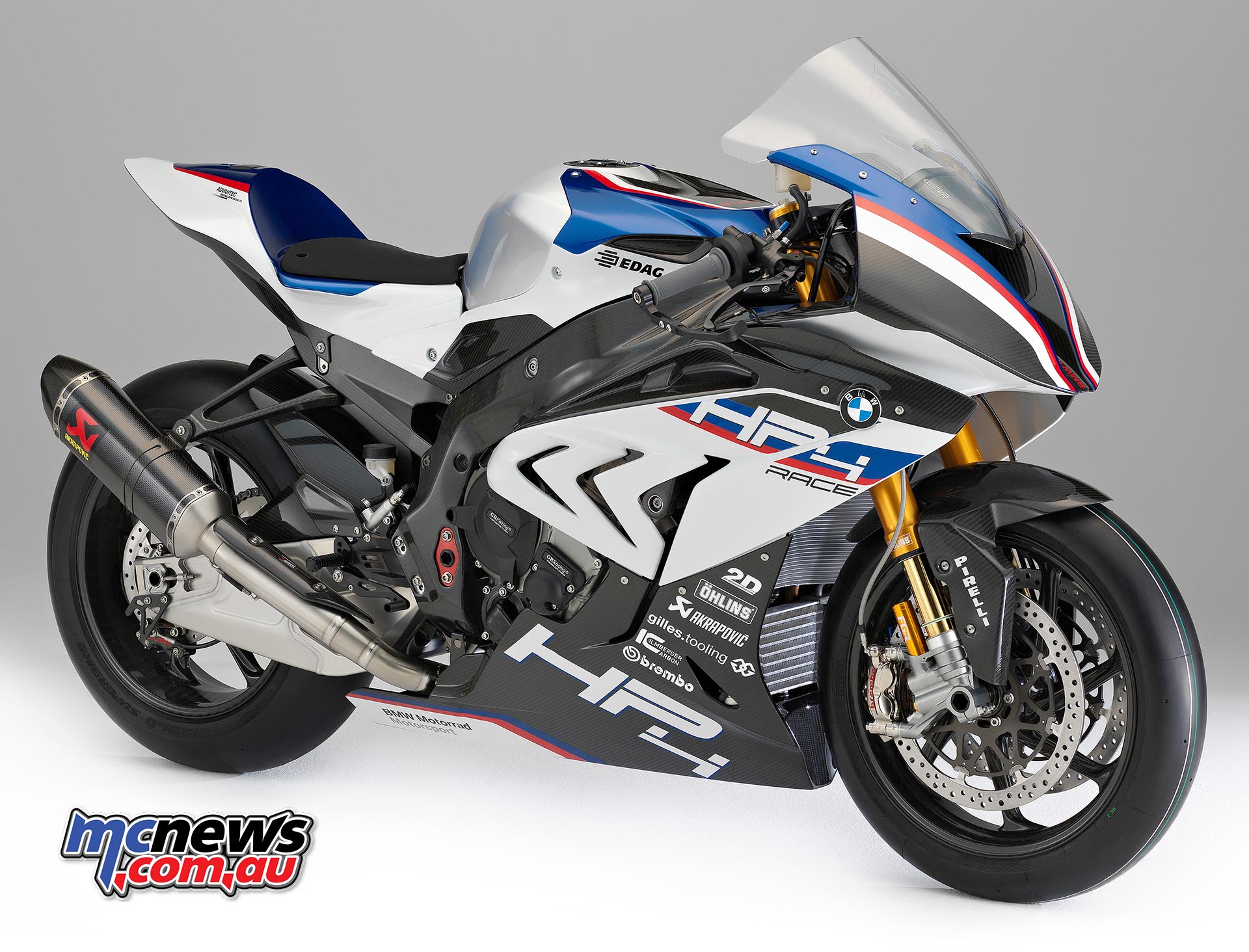New 1262cc DVT engine for 2018 Multistrada
Updates include frame, swingarm and electronics
Originally launched back in 2010, the Multistrada took a new direction for Ducati and for 2018 the Multistrada gains more goolies thanks to a new Ducati Testastretta DVT (Desmodromic Variable Timing) 1262cc engine, new chassis, more advanced electronics, and an aesthetic update that includes new fairing panels and lighter, sportier looking wheels.
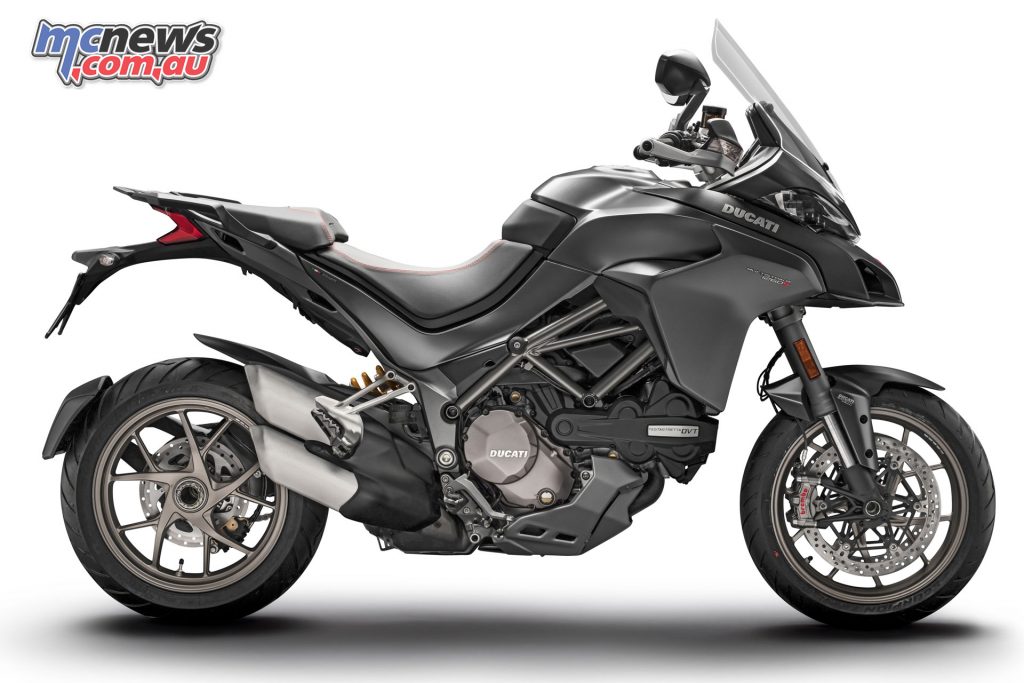
The 1262cc Ducati Testastretta DVT engine is Euro 4 approved and promises more low-to-mid range torque for even better rideability in everyday use. With 85 per cent of the torque available by 3500rpm. By 5500rpm the torque figure is 18 per cent higher compared to its immediate predecessor.
Improved Ride-by-Wire system claims smoother throttle control, combined with the smoother, more accurate up and downshifting offered by the DQS (Ducati Quick Shift) Up & Down.
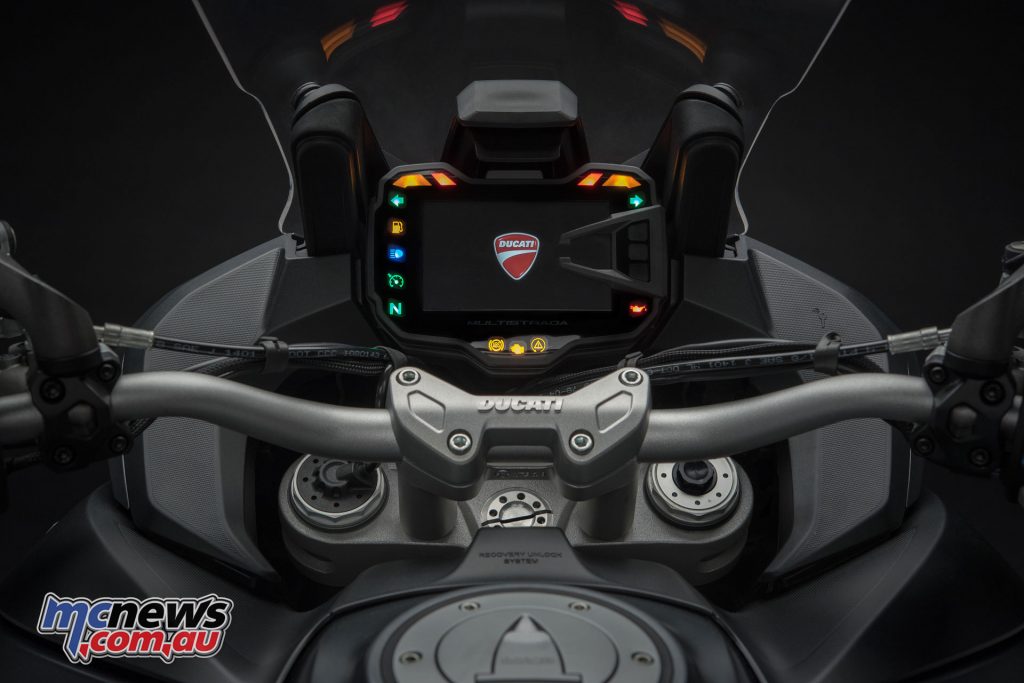
The updated chassis, with a longer swinging arm and wheelbase and revised geometry up front, makes for sharper handling, and ensures full stability even when riding two-up at full load with side panniers.
A Bosch IMU (Inertial Measurement Unit) controls Cornering ABS, the Ducati Cornering Lights (DCL) functionality incorporated in the full LED headlight of the Multistrada S, and Ducati Wheelie Control (DWC). Both DWC and DTC feature rider-settable eight-level sensitivity and can be disabled.
The Vehicle Hold Control (VHC) has been included as standard on the Multistrada 1260. Lastly, the Bosch IMU inertial platform also interacts with the semi-active Ducati Skyhook Suspension (DSS) Evolution control system featured on the Multistrada 1260 S.
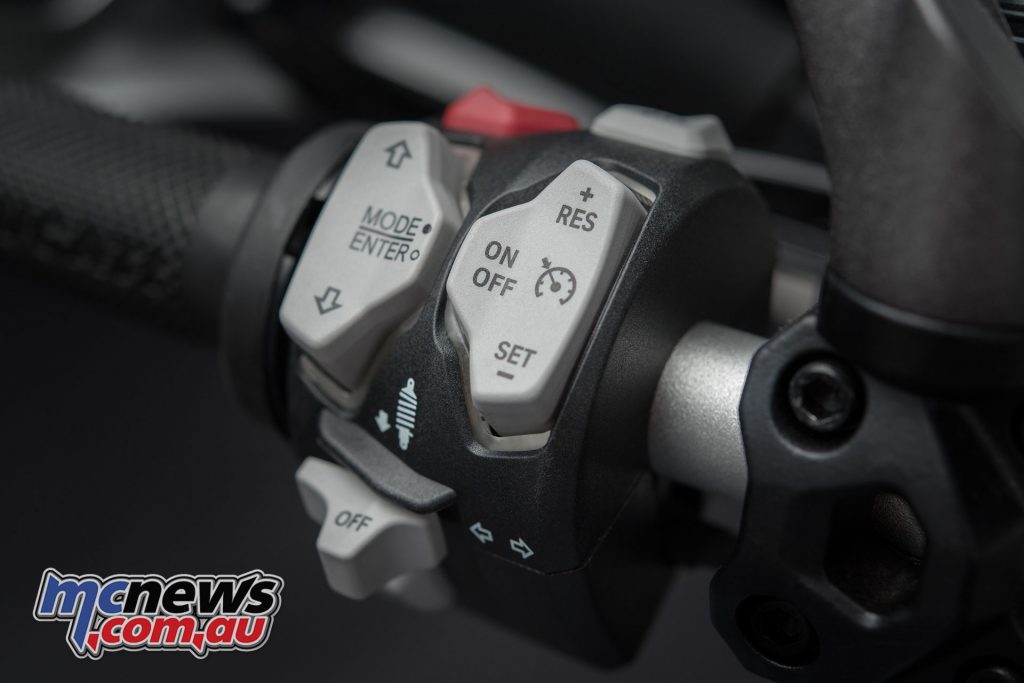
All models feature Cruise Control, with the controls incorporated in the switchgear on the left handlebar. On the S version a Bluetooth module is included as standard, this activates the Ducati Multimedia System (DMS) and can connect the bike to a smartphone for user-friendly control of basic functions such as receiving incoming calls, notification of text messages, or playing music via the handlebar controls. The corresponding information is displayed on the new TFT dashboard.
The Multistrada 1260 also comes with a new Hands Free system for enhanced security.
Long maintenance intervals are also a boon, with an oil change required every 15,000km and a “Desmo Service” every 30,000 km, meaning Multistrada owners will be able to enjoy long trips between services.
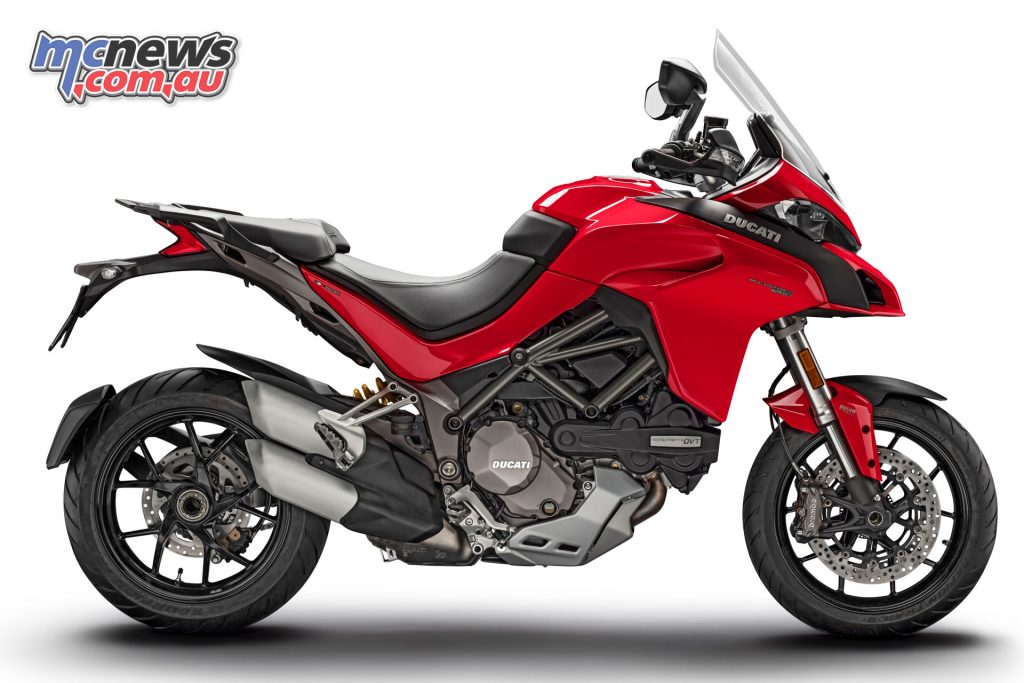
2018 Ducati Multistrada 1260 Standard Features
- Ducati Red with grey frame and black wheels
- Ducati Testastretta DVT 1262 cc engine
- Bosch IMU: Inertial Measurement Unit
- Bosch-Brembo 9.1ME Cornering ABS system
- 320-mm front brake discs with Brembo 4-piston radial callipers
- Electronic cruise control
- Riding Modes
- Ride-by-Wire
- Ducati Wheelie Control (DWC)
- Ducati Traction Control (DTC)
- Vehicle Hold Control (VHC)
- Rider seat with adjustable height
- LCD instrument panel
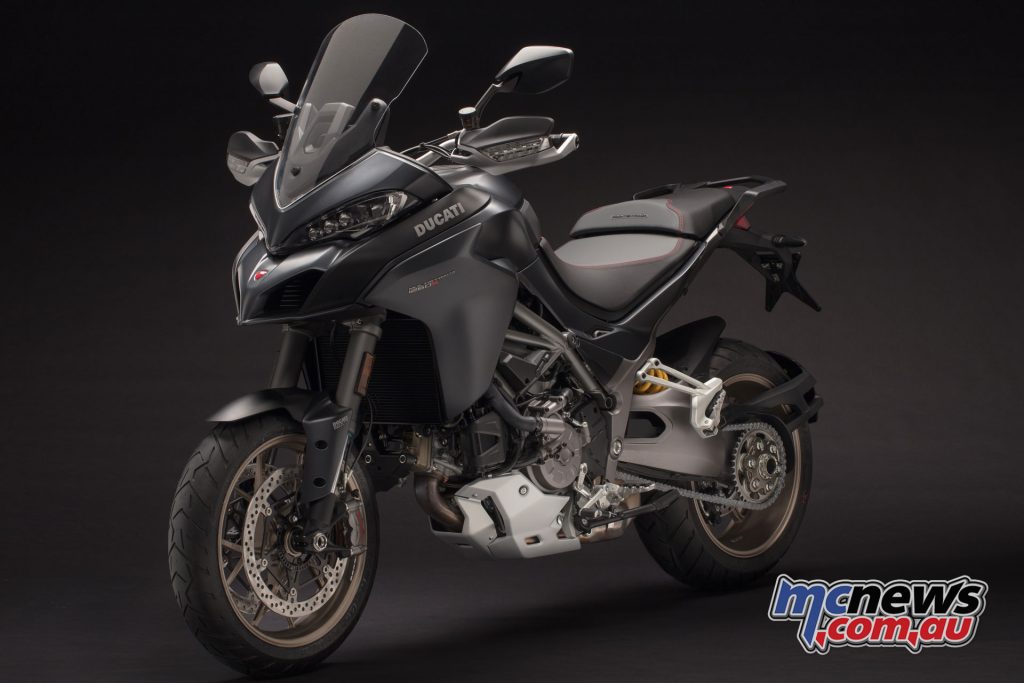
Multistrada 1260 S (S D-Air) Additional Features
- Ducati Red with grey frame and black wheels
- Iceberg White with grey frame and gold coloured wheels (Multistrada 1260 S only)
- Volcano Grey with grey frame and gold coloured wheels (Multistrada 1260 S only)
- Ducati Multimedia System (DMS)
- Ducati Quick Shift (DQS) Up&Down
- Electronic semi-active Sachs Ducati Skyhook Suspension (DSS) Evolution suspension system
- Full LED headlamp with Ducati Cornering Lights (DCL)
- Instrument panel with 5” full colour high-resolution TFT screen specifically designed for motorcycle applications
- D-Air system (Multistrada 1260 S D-Air only)
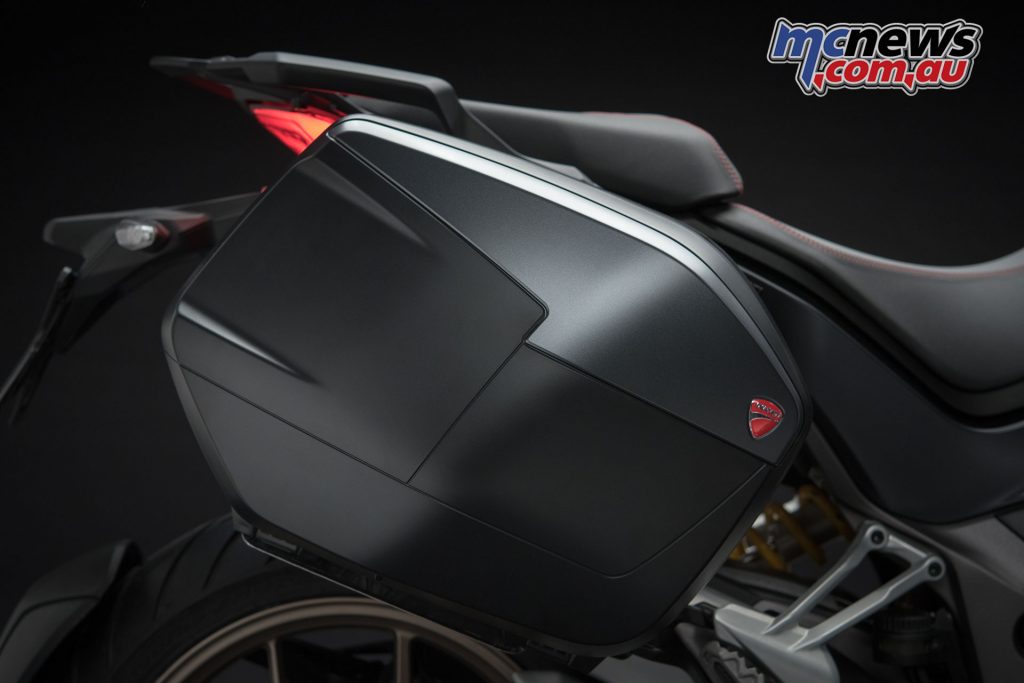
Multistrada Personalisation Packs
- Touring Pack – Heated grips, side panniers and centre stand.
- Sport Pack – Road-legal exhaust (homologated only for EU) Ducati Performance by Termignoni and carbon fibre front mudguard, CNC machined billet aluminium brake and clutch reservoir caps.
- Urban Pack – Top case, tank bag with lock and USB hub.
- Enduro Pack – Supplementary LED lights and Ducati Performance components by Touratech: engine protection bars, radiator guard, oil sump guard, bigger kickstand base and off-road footpegs.
Click through to the following pages for more in depth detail





